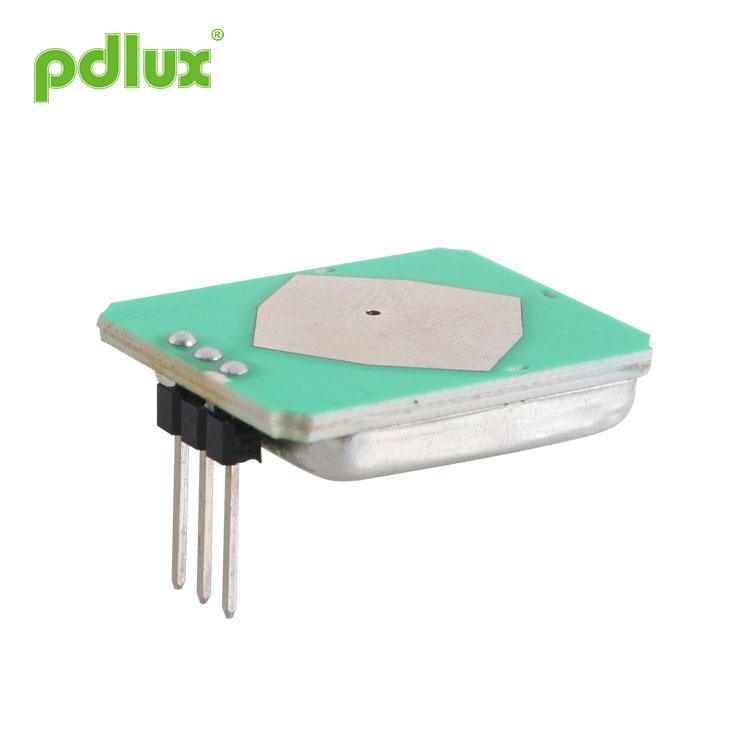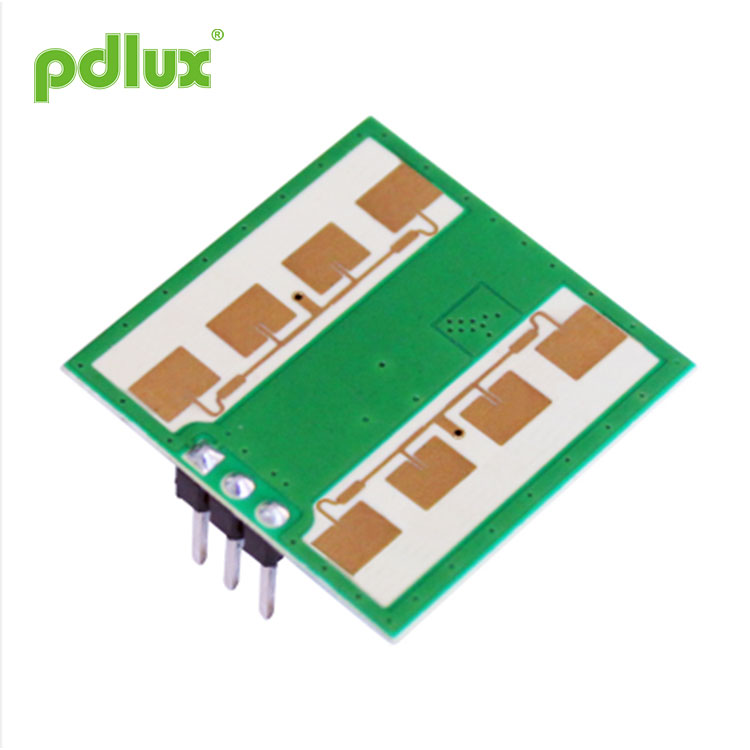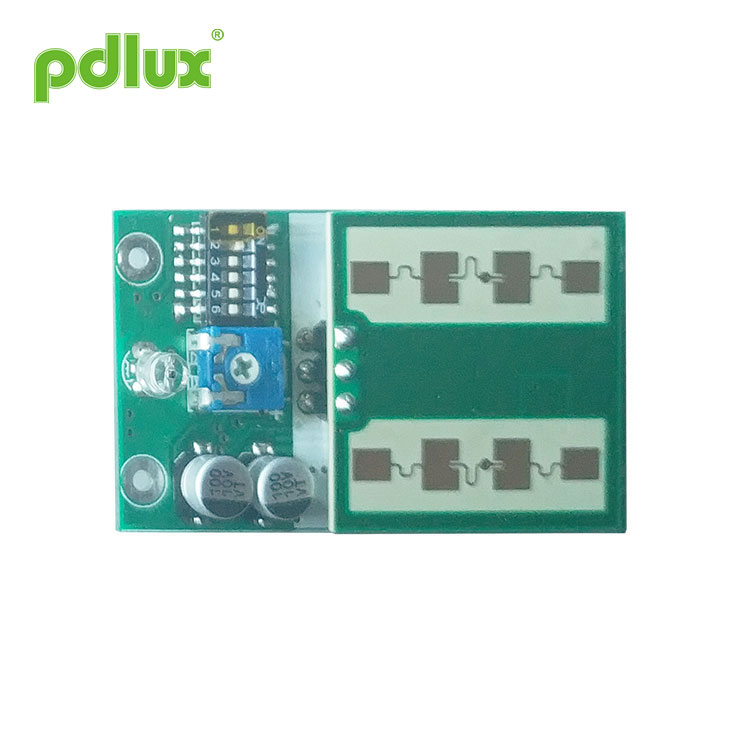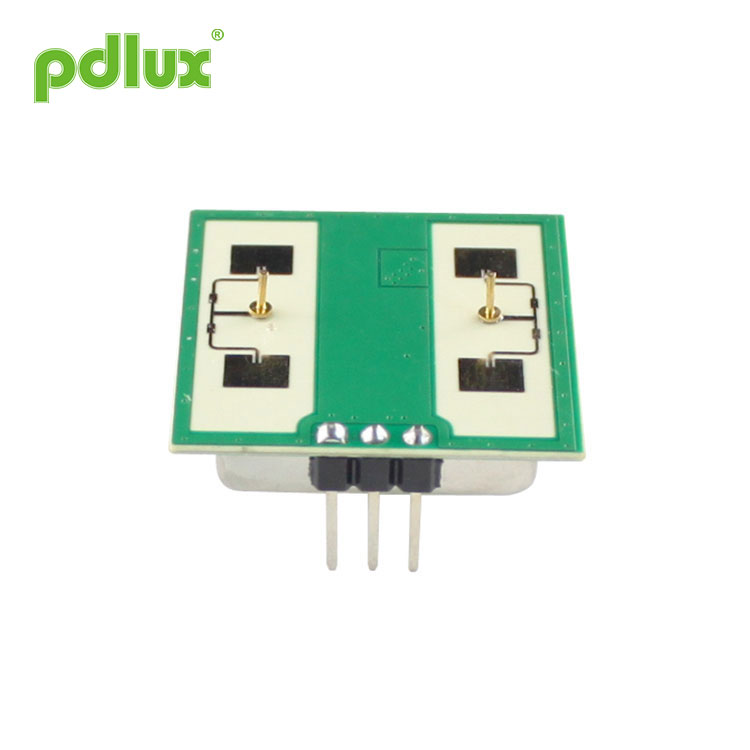- Español
- Português
- русский
- Français
- 日本語
- Deutsch
- tiếng Việt
- Italiano
- Nederlands
- ภาษาไทย
- Polski
- 한국어
- Svenska
- magyar
- Malay
- বাংলা ভাষার
- Dansk
- Suomi
- हिन्दी
- Pilipino
- Türkçe
- Gaeilge
- العربية
- Indonesia
- Norsk
- تمل
- český
- ελληνικά
- український
- Javanese
- فارسی
- தமிழ்
- తెలుగు
- नेपाली
- Burmese
- български
- ລາວ
- Latine
- Қазақша
- Euskal
- Azərbaycan
- Slovenský jazyk
- Македонски
- Lietuvos
- Eesti Keel
- Română
- Slovenski
- मराठी
- Srpski језик
PDLUX PD24-V1 24.125GHz K-band Doppler Transceiver Module
In order to avoid damage to the PDLUX PD24-V1 24.125GHz K-band doppler transceiver module, care should be taken. ESD protection measures should be taken at all stages of storage, handling, assembly, and testing. Do not touch the radar antenna and pins of this module, and do not touch the pins with a multimeter to measure.
Model:PD24-V1
Send Inquiry
Product Description
PDLUX PD24-V1 24.125GHz K-band Doppler Transceiver Module

PD24-V1 is a 24.125GHz microwave motion sensor is a K-band Doppler transceiver module. This is a flat antenna designed by ourselves, which can develop a layout with good matching transmission and reception. The main frequency of the sensor is more stable. It is our design patent, suitable for a wider range of ambient temperature. With lower noise, higher resolution and higher sensitivity. Built-in anti-static function. Low power consumption processing and high precision MCU are adopted internally. Compared with traditional similar products, the performance is more stable and reliable. This series of sensor modules are ideal for automatic lighting, security, automatic doors, and smart homes.
The company can also customize high-speed mobile detectors for special purposes. Radar distance detector. Radar presence detector.
Feature Description of PDLUX PD24-V1 24.125GHz K-band Doppler Transceiver Module
> 24GHz (ISM standard frequency band) motion detector based on the working principle of radar.
> The maximum detection distance can reach more than 20 meters. (the detection distance when moving forward to the sensor)
> Adjustable detection distance under stable low interference power supply environment.
> Low power consumption: <2.5mA at 3V, <3.5mA at 5V.
> Appearance size: 45.5mm (L) x 26mm (W) x 13.8mm (H).
Technical Parameters
|
Parameter |
Notes |
Min |
Typ |
Max |
Units |
|
Supply Voltage |
Vcc |
3.0 |
3.3 |
5.0 |
V |
|
Current Consumption |
Icc |
2.5 |
3.0 |
3.5 |
mA |
|
Output current |
2.5~3.5mA(3~5V) |
||||
|
Operating Temperature |
Top |
-30~+85 |
℃ |
||
|
Storage temperature |
Tstg |
-10 |
+60 |
℃ |
|
|
Frequency Setting |
f |
24.000 |
24.125 |
24.250 |
GHz |
|
Radiated Power (EIRP) |
Pout |
<2.0 |
<2.5 |
<3.0 |
mW |
|
Storage ambient humidity |
45%~65%RH |
||||
|
Interface Definition The interface of the application module is a pin header with a pitch of 2.54mm3pin |
 |
Pin Dunction Description of PDLUX PD24-V1 24.125GHz K-band Doppler Transceiver Module
|
Number |
Pin Name |
Input / Output |
Explanation |
|
1 |
Vcc |
Input |
Working voltage: DC3-5V (positive pole of low-disturbance power supply) |
|
2 |
Signal output |
Output |
High level output 500mS |
|
3 |
GND |
Input |
Connect to power ground (negative power supply) |
Installation of PDLUX PD24-V1 24.125GHz K-band Doppler Transceiver Module
1.In order to avoid damage to the equipment, care should be taken. ESD protection measures should be taken at all stages of storage, handling, assembly, and testing. Do not touch the radar antenna and pins of this module, and do not touch the pins with a multimeter to measure.
2.For PD24-V1 installed outdoors, the detector can detect the raindrop signal when it is raining. That is, the radar detector installed outdoors on a rainy day can detect raindrops.
Shell Installation Method and Material Selection
During installation, the shell shall not be made of metal material or metal layer; Non-carbon plastic materials or foam can be used.
Correct method:
1.When the shell is made of plastic materials (ABS, PVC, etc.), the thickness and space of the shell shall be correctly estimated, and the antenna shall be wrapped in a way that does not directly contact with the structure of the radar antenna;
2.When the shell is made of foam material (such as Stypopor or similar material), the relative dielectric constant of the material should be close to 1.
Wrong method:
1.Wrap the antenna with foil or some metal parts;
2.Spray the antenna structure with any kind of paint or varnish;
3.Wrap the antenna with A CFK sheet (conductive);
4.The plastic material is in direct contact with the corrodedantenna structure (it has a high permittivity effect on the resonant frequency of the patch);
5.Unreasonable structure will lead to abnormal radar sensor, and the detection effect will be worse.
Recommended Dimensions of Enclosure of PDLUX PD24-V1 24.125GHz K-band Doppler Transceiver Module
For 24GHz radar, according to experience, the shell can be made of plastic material with a thickness of about 3mm, and keep a distance of about 6mm from the surface of the radar antenna. If a thicker plastic material is used, the increase in insertion loss must be considered; at the same time, a case that is too thick may affect the antenna pattern.
















